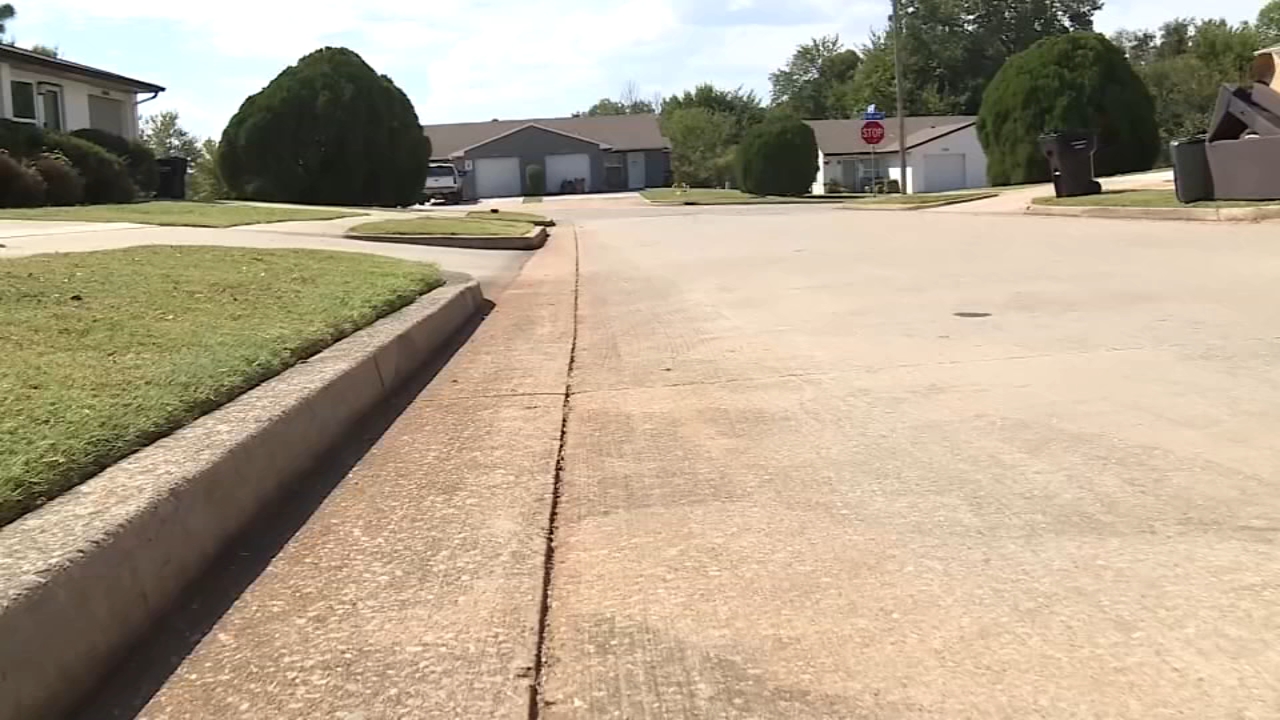Report on Legislative Advocacy for Domestic Violence Survivors and Alignment with Sustainable Development Goals (SDGs)
Executive Summary
This report analyzes the legislative advocacy and policy interventions of United States Representative Debbie Dingell concerning domestic violence. Her work is framed within the context of the United Nations’ Sustainable Development Goals (SDGs), demonstrating a direct alignment with efforts to achieve gender equality, promote health and well-being, and build peaceful, just societies. Representative Dingell utilizes her personal experience as a case study to advocate for policy changes that strengthen protections and resources for survivors. Her efforts focus on restricting firearm access for abusers, securing funding for support services, and enhancing the healthcare system’s response, thereby contributing to the advancement of SDG 3, SDG 5, and SDG 16.
The Intersection of Domestic Violence, Public Health, and Institutional Justice
A Case Study in Policy Advocacy
Representative Debbie Dingell’s legislative work is informed by her direct experience with domestic violence during her childhood. This experience, which included parental mental illness, substance abuse, and gun violence, serves as a powerful illustration of the complex factors contributing to domestic abuse. By sharing this narrative in a legislative context, Rep. Dingell highlights the urgent need for systemic responses that address the multifaceted nature of the issue, moving it from a private matter to a public policy imperative.
Linkages to Sustainable Development Goals
Rep. Dingell’s advocacy directly addresses several key SDGs:
- SDG 5: Gender Equality. Her work is centered on Target 5.2: “Eliminate all forms of violence against all women and girls in the public and private spheres.” By championing legislation and funding for survivors, she works to dismantle the structures that perpetuate gender-based violence.
- SDG 3: Good Health and Well-being. The long-term trauma experienced by survivors and their families, including mental health challenges and substance abuse, connects directly to Target 3.4 (promote mental health and well-being) and Target 3.5 (strengthen the prevention and treatment of substance abuse).
- SDG 16: Peace, Justice and Strong Institutions. The focus on preventing violence and ensuring access to justice aligns with Target 16.1 (“Significantly reduce all forms of violence and related death rates everywhere”) and Target 16.2 (“End abuse, exploitation, trafficking and all forms of violence against and torture of children”).
Legislative and Policy Interventions for SDG Advancement
Strengthening Institutional Frameworks (SDG 16)
Rep. Dingell has pursued legislative action to build stronger, more responsive institutions capable of protecting survivors. This includes fostering bipartisan cooperation, which is essential for SDG 17 (Partnerships for the Goals).
- The Bipartisan Working Group to End Domestic Violence: This group was established to identify and advance solutions to strengthen resources and protections for survivors.
- The Violence Against Women Act (VAWA): Rep. Dingell was a key proponent of the 2019 VAWA updates, authoring two critical provisions:
- The Zero Tolerance for Domestic Abusers Act, which closes legal loopholes allowing perpetrators of dating violence and misdemeanor stalking to access firearms, directly supporting SDG 16.1.
- A provision to strengthen the healthcare system’s capacity to identify, assess, and respond to domestic violence, advancing the objectives of SDG 3.
Advocating for Survivor Resources and Support Systems
A significant focus of Rep. Dingell’s work has been to challenge administrative actions that threaten the financial stability of survivor support networks. This advocacy is critical for maintaining the community-based infrastructure needed to achieve SDG 5 and SDG 16.
- Funding for the Office on Violence Against Women (OVW): Voiced strong opposition to rollbacks in funding opportunities for domestic violence resources through the Department of Justice.
- Protection of Health and Human Services Programs: Expressed deep concern over staff and budget cuts to federal programs that support survivors of domestic and sexual violence.
- Support for Community Shelters: Highlighted the precarious funding situation for local organizations, such as a shelter in Detroit, whose ability to provide essential services is threatened by federal funding instability.
Strategic Focus on Awareness and Empowerment
Raising Community Awareness to Achieve SDG Targets
Rep. Dingell’s strategy includes a strong emphasis on public awareness and education to reduce the stigma associated with domestic violence. This approach is vital for creating a supportive environment where survivors feel safe seeking help. Key messages include:
- Domestic violence is a universal issue that transcends socioeconomic status.
- Community members, including educators and healthcare professionals in emergency rooms, must be trained to recognize signs of abuse and connect individuals with resources, a crucial step for protecting children (SDG 16.2) and promoting health (SDG 3).
Conclusion: A Call for Sustained Action
The legislative work of Representative Dingell demonstrates a comprehensive approach to combating domestic violence that is fully aligned with the Sustainable Development Goals. Her efforts underscore that progress requires a combination of robust legislation, strong and well-funded institutions (SDG 16), bipartisan partnership (SDG 17), and a societal commitment to protecting the health and rights of all individuals (SDG 3 and SDG 5). The core message is one of empowerment: with adequate resources and community support, survivors can overcome trauma and lead full, productive lives. Sustained political will is necessary to ensure these support systems are protected and strengthened.
Analysis of Sustainable Development Goals in the Article
1. Which SDGs are addressed or connected to the issues highlighted in the article?
-
SDG 3: Good Health and Well-being
The article connects to SDG 3 through its focus on the mental and physical health consequences of domestic violence. It details the perpetrator’s mental illness and addiction, the long-term trauma inflicted on children, and a resulting death by overdose. Furthermore, it highlights legislative efforts to integrate the healthcare system’s response to domestic violence by helping survivors access behavioral health resources.
-
SDG 5: Gender Equality
This goal is central to the article, which revolves around domestic violence, a primary form of gender-based violence. The narrative focuses on the experiences of women and children as survivors. The legislative actions discussed, such as the Violence Against Women Act (VAWA) and funding for the Office of Violence Against Women (OVW), are directly aimed at protecting women and eliminating violence against them.
-
SDG 16: Peace, Justice and Strong Institutions
The article addresses SDG 16 by examining the role of justice and institutions in preventing violence and supporting survivors. It discusses the failure of law enforcement to intervene in the past, the importance of strong legislation like VAWA, and the need to close legal loopholes that allow abusers to access firearms. It also highlights the role of government bodies (Congress, Department of Justice) and the impact of their funding decisions on the safety net for survivors.
2. What specific targets under those SDGs can be identified based on the article’s content?
-
SDG 3: Good Health and Well-being
- Target 3.4: Promote mental health and well-being. The article explicitly discusses the perpetrator’s mental illness (“suffered from mental illness. He was paranoid”) and the lasting trauma on the children (“My younger sister… was forever traumatized”). Rep. Dingell’s legislative work aims to strengthen access to “behavioral health and safety resources” for survivors.
- Target 3.5: Strengthen the prevention and treatment of substance abuse. This is relevant as the article states Dingell’s father was “addicted to prescription drugs” and her sister later “died of an overdose,” which Dingell connects to the childhood trauma.
-
SDG 5: Gender Equality
- Target 5.2: Eliminate all forms of violence against all women and girls in the public and private spheres. The entire article is a testament to this target, using Rep. Dingell’s personal story of growing up with domestic violence to advocate for policies and resources to protect survivors. Her work on the Violence Against Women Act (VAWA) and the Bipartisan Working Group to End Domestic Violence directly supports this goal.
-
SDG 16: Peace, Justice and Strong Institutions
- Target 16.1: Significantly reduce all forms of violence and related death rates everywhere. The article addresses this through its focus on preventing lethal domestic violence, particularly by restricting abusers’ access to guns. Dingell’s story of her father having a gun during a violent episode (“He took the door knobs off of every door… we didn’t know if we were going to live or die”) underscores this connection.
- Target 16.2: End abuse, exploitation, trafficking and all forms of violence against and torture of children. Rep. Dingell’s account is a direct narrative of child abuse and its lifelong impact. She speaks of hiding in a closet as a middle-schooler and emphasizes that “when a child is in that kind of unstable, dangerous situation, it is not the best for the child.”
- Target 16.4: By 2030, significantly reduce illicit financial and arms flows. While focused on a domestic context, this target is relevant through the discussion of the Zero Tolerance for Domestic Abusers Act, which aims to stop the flow of arms to dangerous individuals by closing “loopholes that made it possible for perpetrators of dating violence and those convicted of misdemeanor stalking to legally access guns.”
3. Are there any indicators mentioned or implied in the article that can be used to measure progress towards the identified targets?
-
Indicators for SDG 3 (Good Health and Well-being)
- Availability of mental and behavioral health services for survivors: Progress can be measured by the successful implementation of legislation that “strengthened the health care system’s identification, assessment and response to domestic violence… helping them better access behavioral health and safety resources.”
- Prevalence of substance abuse and related mortality: The article implies this through the stories of Dingell’s father’s addiction and her sister’s overdose death, suggesting that reducing domestic violence could impact these health outcomes.
-
Indicators for SDG 5 (Gender Equality)
- Existence of legal frameworks to promote, enforce and monitor equality and non-discrimination on the basis of sex: The article explicitly mentions the passage and updates to the Violence Against Women Act (VAWA) as a key legislative framework.
- Availability of resources for survivors: This is a key indicator mentioned throughout the article. Specific measures include the amount of federal funding available through the Office of Violence Against Women (OVW) and the number of beds in shelters, such as the “shelter with 85 beds” in Detroit whose funding is now at risk.
-
Indicators for SDG 16 (Peace, Justice and Strong Institutions)
- Proportion of the population subjected to physical, psychological or sexual violence: While not providing statistics, the article’s core purpose is to raise awareness to reduce the prevalence of domestic violence. Dingell’s statement, “Domestic violence is real. Domestic violence happens in every kind of family,” points to the need to measure and reduce this proportion.
- Existence of laws restricting access to firearms for perpetrators of domestic violence: Progress is indicated by the passage of laws like the “Zero Tolerance for Domestic Abusers Act” which closes specific legal loopholes.
- Community awareness and training: An implied indicator is the level of training provided to community professionals. Dingell states, “you have to raise community awareness” and “educate teachers and people who work in emergency rooms” to identify and help victims.
4. Table of SDGs, Targets, and Indicators
| SDGs | Targets | Indicators Identified in the Article |
|---|---|---|
| SDG 3: Good Health and Well-being |
3.4: Promote mental health and well-being.
3.5: Strengthen the prevention and treatment of substance abuse. |
– Availability of behavioral health and safety resources for survivors. – Integration of domestic violence response into the healthcare system. – Prevalence of mental illness and trauma linked to domestic abuse. – Mortality rate from substance abuse/overdose connected to trauma. |
| SDG 5: Gender Equality | 5.2: Eliminate all forms of violence against all women and girls. |
– Enactment and funding of laws like the Violence Against Women Act (VAWA). – Level of federal funding for survivor services (e.g., through the Office of Violence Against Women). – Number of available beds in domestic violence shelters (e.g., the “85 beds” in Detroit). |
| SDG 16: Peace, Justice and Strong Institutions |
16.1: Significantly reduce all forms of violence and related death rates.
16.2: End abuse, exploitation, trafficking and all forms of violence against children. 16.4: Significantly reduce illicit arms flows. |
– Existence and enforcement of laws restricting firearm access for abusers (e.g., Zero Tolerance for Domestic Abusers Act). – Level of community awareness and training for professionals (teachers, ER staff) to identify abuse. – Funding for community-based support organizations. – Responsiveness of law enforcement to domestic violence calls. |
Source: 19thnews.org







